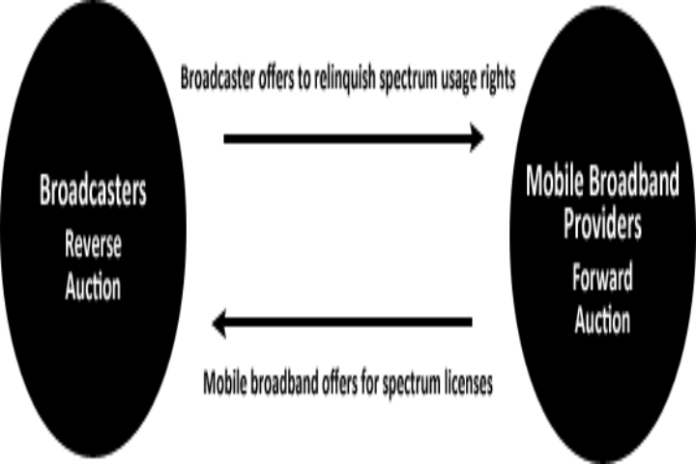The FCC 600 MHz incentive auction kicked off with the reverse auction proceedings, with carriers Verizon, AT&T and T-Mobile having to wait
The Federal Communications Commission’s highly anticipated 600 MHz incentive auction kicked off this week in what is expected to be a complicated process running well into the second half of the year.
The process began with television broadcasters making their initial bid commitments by end of day on March 29, which the FCC will then use to begin the reverse auction aspect of the proceedings. The reverse auction will determine the price at which broadcasters will voluntarily relinquish their spectrum usage rights in the 600 MHz band.
Television broadcasters interested in giving up some of their current spectrum holdings in the 600 MHz band had until Jan. 12 to file an application with the FCC, with a statement from the National Association of Broadcasters indicating “robust” participation from television broadcasters.
“The FCC’s staff has done a remarkable amount of work to get us to this point,” explained NAB EVP of communications Dennis Wharton, in a statement. “NAB expects robust broadcaster participation in the reverse auction, and we hope to see similarly robust participation from wireless bidders in the forward auction. While we’ve expressed our concerns, we hope that the rules and systems the FCC has in place will ensure that this voluntary auction goes off without a hitch, and we look forward to the close of a successful auction.”
The reverse auction process is expected to take anywhere from three weeks to two months, at which point the FCC will take a break in the proceedings to repackage the spectrum offered up by the broadcasters into chunks that can be used by commercial cellular providers. Analysts predict the FCC could have between 80 megahertz and 110 megahertz of spectrum available for the auction’s more conventional forward auction process.
“The lynchpin joining the reverse and the forward auctions is the ‘repacking’ process,” the FCC noted. “Repacking involves reorganizing and assigning channels to the remaining broadcast television stations in order to create contiguous blocks of cleared spectrum suitable for flexible use. The vast majority of stations that remain on the air after the auction will be assigned channels in the TV band; in a few markets where the post-auction TV band is not large enough to accommodate every station, stations may be assigned a channel in the wireless band.”
The FCC had previously said it will set aside 30 megahertz of the repackaged spectrum for carriers that do not already control a significant amount of sub-1 GHz spectrum holdings, which is predominately made up of AT&T and Verizon Communications. T-Mobile US is expected to be the most aggressive bidder for the set aside spectrum, with some predicting the carrier could spend up to $10 billion on licenses. While not eligible for the set aside licenses, analysts predict AT&T could bid between $10 billion and $15 billion for licenses – having committed to at least $9 billion in bids as part of gaining approval of its DirecTV acquisition – while Verizon is predicted to bid around $10 billion.
Overall estimates for the auction have ranged from $25 billion to in excess of $80 billion in total proceeds, with most in the $35 billion to $45 billion range. The FCC’s AWS-3 auction, which finished up early last year, took in a record haul in excess of $41 billion.
Bored? Why not follow me on Twitter

